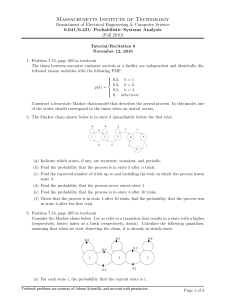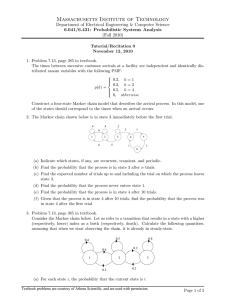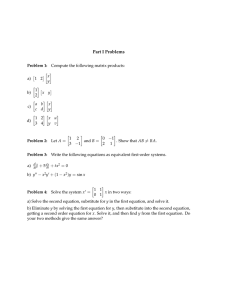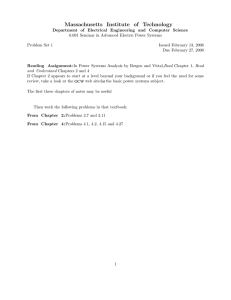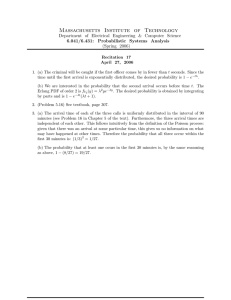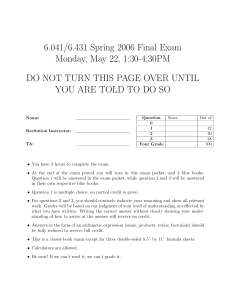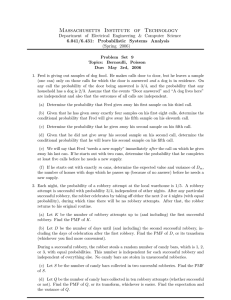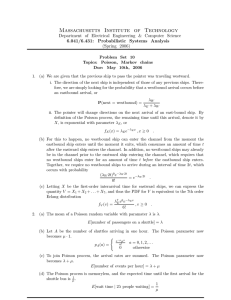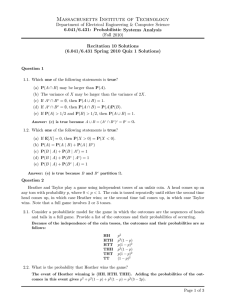Massachusetts Institute of Technology
advertisement
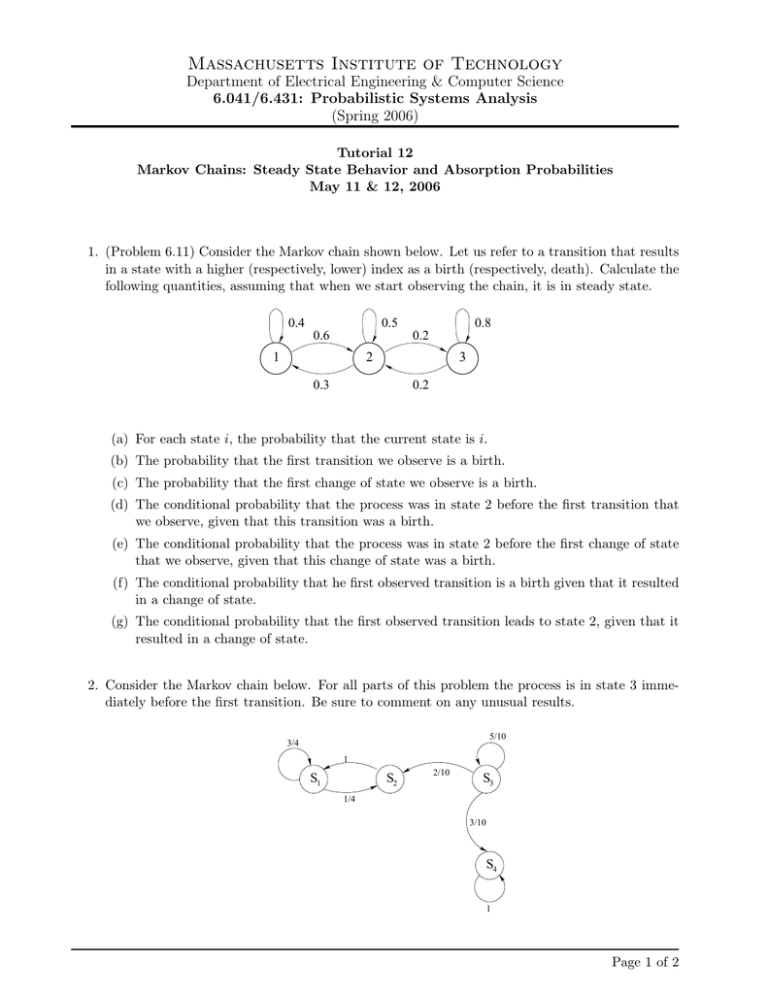
Massachusetts Institute of Technology Department of Electrical Engineering & Computer Science 6.041/6.431: Probabilistic Systems Analysis (Spring 2006) Tutorial 12 Markov Chains: Steady State Behavior and Absorption Probabilities May 11 & 12, 2006 1. (Problem 6.11) Consider the Markov chain shown below. Let us refer to a transition that results in a state with a higher (respectively, lower) index as a birth (respectively, death). Calculate the following quantities, assuming that when we start observing the chain, it is in steady state. 0.4 0.5 0.6 0.8 0.2 1 2 3 0.3 0.2 (a) For each state i, the probability that the current state is i. (b) The probability that the first transition we observe is a birth. (c) The probability that the first change of state we observe is a birth. (d) The conditional probability that the process was in state 2 before the first transition that we observe, given that this transition was a birth. (e) The conditional probability that the process was in state 2 before the first change of state that we observe, given that this change of state was a birth. (f) The conditional probability that he first observed transition is a birth given that it resulted in a change of state. (g) The conditional probability that the first observed transition leads to state 2, given that it resulted in a change of state. 2. Consider the Markov chain below. For all parts of this problem the process is in state 3 imme­ diately before the first transition. Be sure to comment on any unusual results. 5/10 3/4 1 S1 S2 2/10 S3 1/4 3/10 S4 1 Page 1 of 2 Massachusetts Institute of Technology Department of Electrical Engineering & Computer Science 6.041/6.431: Probabilistic Systems Analysis (Spring 2006) (a) Find the variance for J, the number of transitions up to and including the transition on which the process leaves state S3 for the last time. (b) Find πi for i = 1, 2, . . . , 4, the probability that the process is in state i after 1010 transitions or explain why these probabilities can’t be found. (c) Given that the process never enters state 4, find the πi ’s or explain why they can’t be found. Page 2 of 2

